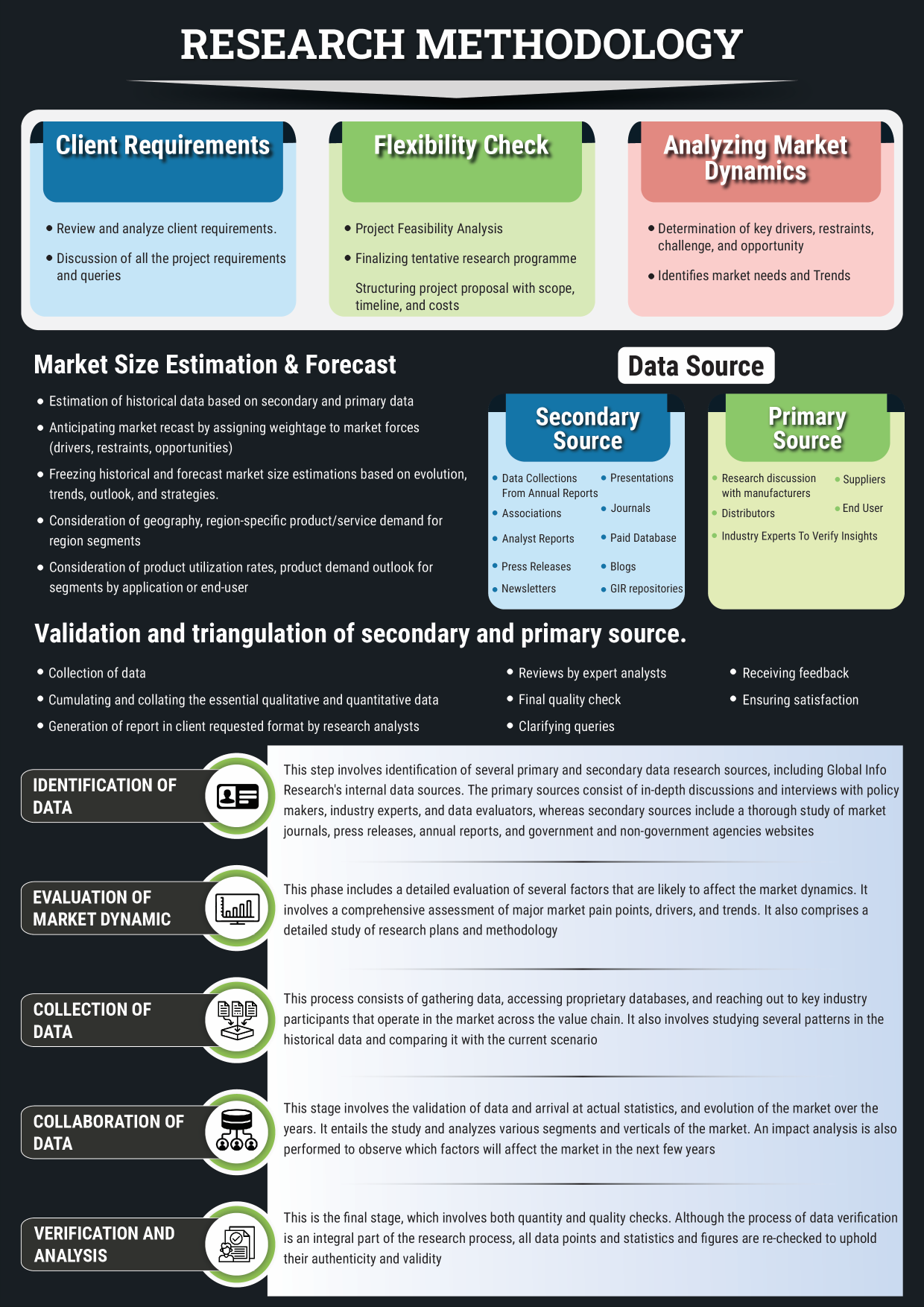Vaccine for Influenza Market 2025: Growth Outlook, Innovation Trends & Global Strategy
The vaccine for influenza market is entering a pivotal era, driven by technology, public health priorities, and the growing demand for pandemic resilience. As global health systems recalibrate post-COVID-19, influenza remains a persistent threat with seasonal outbreaks posing significant risks—especially to elderly and immunocompromised populations. With 2025 on the horizon, the market is being reshaped by innovations in vaccine delivery, new manufacturing approaches, and increased global awareness around infectious disease prevention.
Influenza, commonly known as the flu, causes widespread illness every year, resulting in substantial healthcare costs and productivity losses. Seasonal flu vaccination has long been a front-line defense strategy, yet its effectiveness often varies due to strain mismatch and outdated production methods. Today, new technologies are transforming how vaccines are formulated, distributed, and administered.
The 2025 influenza vaccine market is no longer just about volume—it’s about agility, equity, and precision. Pharmaceutical manufacturers, governments, and healthcare providers are collaborating to build a more responsive ecosystem that anticipates viral evolution, adapts production methods, and meets the rising expectations of a globally aware population.
Key Market Drivers Influencing Growth
Several influential factors are shaping the expansion and direction of the vaccine for influenza market:
- Public Health Preparedness Post-COVID
The global experience with COVID-19 has heightened public awareness of respiratory viruses. This has significantly boosted acceptance of seasonal flu vaccines, especially among younger demographics and high-risk groups. - Aging Global Population
Older adults are more susceptible to influenza-related complications. As the global senior population grows, there is increased demand for more potent and tailored flu vaccines to protect this vulnerable demographic. - Government Support and Immunization Policies
National immunization programs are becoming more robust. Many governments are providing free or subsidized influenza vaccines, particularly for priority groups, expanding overall vaccine uptake. - Increased Global Travel and Urbanization
The interconnected nature of modern society accelerates the spread of viruses. As urban populations grow and travel resumes post-pandemic, the need for comprehensive vaccination coverage is more urgent than ever.
Breakthroughs and Innovation in Influenza Vaccines
Technology is at the heart of the market’s transformation, redefining how vaccines are researched, developed, and delivered.
- mRNA-Based Vaccine Platforms
Following the success of mRNA COVID-19 vaccines, similar platforms are being adapted for influenza. These allow for faster updates when new strains emerge and enable large-scale, rapid production. - Universal Flu Vaccine Research
Scientists are exploring universal flu vaccines that target multiple strains with a single formulation. These could eliminate the need for annual reformulation and offer consistent protection across seasons. - Alternative Delivery Methods
Microneedle patches and intranasal sprays are being developed to simplify administration and increase vaccine acceptance, especially among children and individuals with needle anxiety. - Advanced Adjuvants for Better Immune Response
Improved adjuvants are enhancing the immune response in older adults and people with weakened immunity, addressing a key challenge in current influenza vaccine efficacy.
Regional Dynamics Shaping Market Trends
Regional trends reflect varying degrees of healthcare infrastructure, vaccine accessibility, and public policy efforts:
- North America
The U.S. and Canada remain leaders in vaccine research, development, and implementation. High investment in biotechnology and proactive public health policies make this region a consistent driver of global vaccine innovation. - Europe
European nations are harmonizing efforts through joint procurement and regional surveillance. Countries like Germany, France, and the UK are investing in next-generation flu vaccines with broader efficacy and faster rollout capabilities. - Asia-Pacific
Rapid urbanization and government health campaigns in China, India, Japan, and South Korea are pushing influenza vaccination rates upward. The region is also becoming a key player in manufacturing and exporting flu vaccines. - Latin America, Middle East & Africa
Emerging regions are seeing gradual improvements through partnerships with global organizations and improved vaccine logistics. Efforts are focused on enhancing cold-chain infrastructure and scaling up local production.
Strategic Insights for Market Stakeholders
To remain competitive and resilient, stakeholders must align their strategies with the evolving landscape:
- Invest in Flexible Vaccine Platforms
Companies should prioritize platforms like mRNA and cell-based technologies to adapt quickly to new strains. - Strengthen Global Distribution Networks
Equitable access will remain a critical success factor. Strategic partnerships with NGOs and local governments can help improve outreach in under-vaccinated areas. - Leverage Public-Private Collaboration
Cross-sector partnerships are vital for accelerating research, funding innovative trials, and ensuring effective communication during outbreaks. - Focus on Education and Trust Building
Vaccine hesitancy remains a barrier in many regions. Transparent messaging and culturally aware campaigns are essential to build public confidence.
Conclusion: A Market in Motion
The influenza vaccine market by 2025 is no longer confined by old production cycles or traditional strategies. It is dynamic, tech-driven, and increasingly centered on patient needs. With global health at the forefront of political and social agendas, the future of influenza vaccination is about responsiveness, innovation, and equitable access.
Organizations that adapt to these changing tides—through agile platforms, regional customization, and collaborative approaches—will not only lead the market but also contribute meaningfully to a healthier, more resilient world.
NOTE:
Quants and Trends is proud to offer an extensive portfolio of meticulously researched healthcare market reports, numbering in the thousands. We also provide tailored customization services to ensure our insights align precisely with your strategic objectives and informational needs. For personalized assistance or to discuss your specific requirements, we invite you to get in touch with our team. We also encourage you to request a complimentary sample PDF report. Please visit our Sample Request Page to receive yours today.
Key Market Players
Sanofi
CSL
GSK
Viatris
AstraZeneca
Hualan Bio
Changchun Institute of Biological
Sinovac
BCHT
Jiangsu GDK
KM Biologics
Segmentation By Type
Trivalent Influenza Vaccine
Quadrivalent Influenza Vaccine
Segmentation By Application
6 Months to 3 Years
> 3 Years
Segmentation By Region
North America (United States, Canada and Mexico)
Europe (Germany, France, United Kingdom, Russia, Italy, and Rest of Europe)
Asia-Pacific (China, Japan, Korea, India, Southeast Asia, and Australia)
South America (Brazil, Argentina, Colombia, and Rest of South America)
Middle East & Africa (Saudi Arabia, UAE, Egypt, South Africa, and Rest of Middle East & Africa)
Market SWOT Analysis
What are the strengths of the Influenza Vaccine Market in 2025?
The increasing demand for seasonal flu vaccines due to heightened awareness about flu prevention, especially after the COVID-19 pandemic, will boost the market. Additionally, improved vaccine formulations and advancements in technology are enhancing vaccine efficacy and safety, making them more appealing to consumers and healthcare providers.
What are the weaknesses of the Influenza Vaccine Market in 2025?
The market faces challenges such as vaccine hesitancy and a lack of universal acceptance in certain regions. There are also concerns about vaccine production costs and accessibility, particularly in low-income countries, where distribution and affordability remain obstacles.
What opportunities exist in the Influenza Vaccine Market in 2025?
The opportunity lies in expanding vaccination coverage globally, particularly in emerging markets. With continuous research into universal flu vaccines, there's potential for breakthrough innovations that could address multiple strains in one shot, increasing vaccine demand. Partnerships between private and public health organizations could drive widespread vaccination campaigns.
What are the threats to the Influenza Vaccine Market in 2025?
The market faces threats from the emergence of new flu strains that may reduce the effectiveness of current vaccines. Additionally, anti-vaccine movements and misinformation campaigns may undermine vaccination efforts. There’s also the risk of market saturation in regions with already high vaccination rates, reducing growth potential.
Market PESTEL Analysis
What are the political factors influencing the Influenza Vaccine Market in 2025?
Government policies on vaccination programs, including mandatory vaccinations in certain regions, will significantly impact the market. Funding for public health initiatives and collaboration between governments and vaccine manufacturers are crucial for ensuring widespread access to influenza vaccines.
How do economic factors affect the Influenza Vaccine Market in 2025?
Economic conditions will influence consumer spending on vaccines, with wealthier regions seeing higher vaccination rates. Additionally, economic challenges in low-income countries may restrict access to vaccines due to affordability and distribution issues, slowing market growth in those areas.
What social factors are shaping the Influenza Vaccine Market in 2025?
There is growing social awareness of health and wellness, driven by the recent global health crises. However, vaccine hesitancy in some populations could limit market expansion. Education campaigns and public trust in healthcare systems will be key to encouraging higher vaccination uptake.
How does technology impact the Influenza Vaccine Market in 2025?
Advances in vaccine technology, such as the development of universal flu vaccines, will drive the market forward. Improved production methods, quicker development timelines, and better cold chain logistics are enhancing vaccine accessibility and efficacy globally.
What environmental factors are influencing the Influenza Vaccine Market in 2025?
Sustainability concerns are pushing vaccine manufacturers to adopt eco-friendly practices, such as reducing carbon footprints during production and distribution. Additionally, climate change may influence the spread of flu viruses, altering seasonal patterns and the timing of vaccine demands.
What legal factors are affecting the Influenza Vaccine Market in 2025?
Regulatory requirements for vaccine approval and safety standards remain critical in shaping the market. Intellectual property laws, patent disputes, and liability issues related to vaccine side effects could pose challenges for manufacturers and impact market growth.
Market SIPOC Analysis
Who are the suppliers in the Influenza Vaccine Market in 2025?
The suppliers include pharmaceutical companies, raw material providers (like antigens, adjuvants, and stabilizers), biotechnology firms, and manufacturers of vaccine production equipment. Additionally, research institutions and regulatory bodies play a critical role in the development and approval of new vaccines.
What are the inputs in the Influenza Vaccine Market in 2025?
The key inputs are scientific research data, raw materials for vaccine production, technology for manufacturing, skilled labor for vaccine production, and regulatory frameworks that guide vaccine approval and distribution. Funding and partnerships also serve as crucial inputs for market development.
What processes are involved in the Influenza Vaccine Market in 2025?
Key processes include research and development of new vaccine formulations, clinical trials for efficacy and safety, production of the vaccine at scale, regulatory approval processes, and distribution to healthcare providers. Vaccination campaigns and education initiatives also form important processes for market success.
Who are the customers in the Influenza Vaccine Market in 2025?
Customers include healthcare providers such as hospitals, clinics, and pharmacies, as well as government agencies and public health organizations that administer vaccines. Individuals seeking seasonal flu protection, particularly high-risk groups, are also direct customers in this market.
What are the outputs of the Influenza Vaccine Market in 2025?
The primary outputs are influenza vaccines that are developed, manufactured, and distributed to healthcare providers. Additionally, educational materials, public health campaigns, and immunization programs are critical outputs designed to promote the uptake of flu vaccines worldwide.
Market Porter's Five Forces
What is the threat of new entrants in the Influenza Vaccine Market in 2025?
The threat is relatively low due to high barriers to entry, including significant capital investment, complex regulatory approval processes, and the need for specialized expertise in vaccine research and manufacturing. Established companies dominate the market, making it difficult for new players to enter.
How intense is the bargaining power of suppliers in the Influenza Vaccine Market in 2025?
Supplier power is moderate. While raw materials like antigens and adjuvants are essential for vaccine production, a variety of suppliers exist, reducing the leverage of any single supplier. However, specialized equipment and technology providers can still exert some influence due to the technical nature of vaccine production.
What is the bargaining power of buyers in the Influenza Vaccine Market in 2025?
The bargaining power of buyers is moderate to high. Governments and large healthcare organizations that purchase vaccines in bulk can negotiate lower prices. However, individual consumers generally have limited bargaining power, relying on public health programs and insurance to cover vaccine costs.
What is the threat of substitute products in the Influenza Vaccine Market in 2025?
The threat of substitutes is low. While other preventive measures like antiviral drugs exist, vaccines remain the most effective way to prevent influenza. Other health interventions, like natural remedies or lifestyle changes, do not offer the same level of protection against the flu.
How competitive is the Influenza Vaccine Market in 2025?
The competition is high. The market is dominated by several large, well-established pharmaceutical companies, each vying for market share with different formulations and approaches. Companies continually innovate to improve vaccine efficacy and distribution, adding pressure to stay competitive.
Market Upstream Analysis
What are the key suppliers in the upstream segment of the Influenza Vaccine Market in 2025?
Key suppliers include raw material providers for vaccine production, such as manufacturers of antigens, adjuvants, stabilizers, and preservatives. Additionally, companies that supply manufacturing equipment, such as bioreactors and filling machines, and research institutions contributing to vaccine development are critical to the upstream segment.
What are the essential inputs for the Influenza Vaccine Market in 2025?
The essential inputs are biological materials for vaccine strains, scientific research data for new formulations, advanced biotechnological tools for vaccine development, and regulatory frameworks for ensuring compliance. Efficient production processes and skilled labor also form key inputs in the upstream supply chain.
What role does technology play in the upstream of the Influenza Vaccine Market in 2025?
Technology plays a crucial role in the upstream market by enabling faster and more efficient production methods, such as cell-based vaccine manufacturing and mRNA technology. Advancements in genomics and bioinformatics help in identifying and developing more effective influenza strains, driving innovation in vaccine production.
How does regulation impact the upstream segment of the Influenza Vaccine Market in 2025?
Regulation heavily influences the upstream market. Stringent regulatory guidelines set by authorities like the FDA and EMA ensure that raw materials and vaccine components meet safety and efficacy standards. This impacts how suppliers operate, as they must comply with these standards to ensure their products can be used in vaccine production.
What challenges are faced by the upstream segment of the Influenza Vaccine Market in 2025?
Challenges include fluctuating prices for raw materials, the complexity of ensuring consistent quality control, and the high cost of advanced biotechnological equipment. Additionally, supply chain disruptions, especially for specialized components or in times of high demand, can create bottlenecks in vaccine production.
Market Midstream Analysis
What are the key activities in the midstream segment of the Influenza Vaccine Market in 2025?
The key activities in the midstream segment include large-scale manufacturing, quality control, packaging, and distribution of the influenza vaccines. This phase also involves ensuring that vaccines meet regulatory standards and are stored properly, especially under cold chain conditions, before reaching healthcare providers.
What are the main challenges faced by the midstream segment of the Influenza Vaccine Market in 2025?
Challenges include maintaining efficient production capacity to meet fluctuating demand, particularly during flu season peaks. Ensuring compliance with stringent cold chain requirements, minimizing vaccine wastage, and dealing with potential supply chain disruptions (such as shipping delays or raw material shortages) are also significant concerns.
How does technology impact the midstream segment of the Influenza Vaccine Market in 2025?
Technology is crucial for improving manufacturing efficiency, such as automated production lines that ensure consistency and reduce the time to market. Advanced tracking systems for vaccines in transit help maintain the cold chain, while data analytics is increasingly used to predict demand, ensuring timely delivery and minimizing shortages.
What role does distribution play in the midstream segment of the Influenza Vaccine Market in 2025?
Distribution plays a central role in the midstream segment as it ensures that vaccines are delivered from manufacturers to healthcare facilities. Effective distribution networks, including global logistics companies and cold storage solutions, are necessary to maintain vaccine integrity and meet public health needs, especially in remote or underserved regions.
What regulatory considerations are critical in the midstream segment of the Influenza Vaccine Market in 2025?
Regulatory considerations in the midstream segment focus on compliance with vaccine storage, transportation, and handling standards. Ensuring adherence to Good Manufacturing Practices (GMP) and Good Distribution Practices (GDP) is critical for maintaining vaccine quality and safety throughout the supply chain.
Market Downstream Analysis
What are the key activities in the downstream segment of the Influenza Vaccine Market in 2025?
Key activities in the downstream segment include the administration of vaccines by healthcare providers, post-vaccination monitoring, and the collection of data for adverse events. Public health campaigns and vaccination programs, often led by government agencies or healthcare organizations, are also central to the downstream activities.
What challenges are faced by the downstream segment of the Influenza Vaccine Market in 2025?
Challenges in the downstream segment include addressing vaccine hesitancy, ensuring equitable access in underserved regions, and overcoming logistical barriers in the distribution of vaccines. Additionally, the effectiveness of vaccination campaigns can be influenced by misinformation or lack of awareness in certain populations.
How does technology impact the downstream segment of the Influenza Vaccine Market in 2025?
Technology plays a significant role in improving patient tracking, scheduling, and reminders for vaccinations. Mobile apps and digital platforms facilitate easy access to vaccine information, while data analytics can help monitor vaccine coverage and optimize distribution strategies to maximize impact in specific regions or demographics.
What role do healthcare providers play in the downstream segment of the Influenza Vaccine Market in 2025?
Healthcare providers are critical in the downstream segment as they administer the vaccines, monitor patients for any adverse reactions, and educate the public on the benefits of vaccination. Their role in delivering accurate information and creating trust is essential to achieving high vaccination rates and ensuring the success of vaccination campaigns.
What are the key regulatory considerations in the downstream segment of the Influenza Vaccine Market in 2025?
Regulatory considerations in the downstream segment focus on vaccine administration protocols, monitoring for side effects, and ensuring compliance with national immunization schedules. Healthcare providers must also adhere to reporting requirements for adverse events and follow guidelines for safe vaccine handling and storage at the point of administration.
Chapter 1, to describe Vaccine for Influenza product scope, market overview, market estimation caveats and base year.
Chapter 2, to profile the top manufacturers of Vaccine for Influenza, with price, sales, revenue and global market share of Vaccine for Influenza from 2018 to 2023.
Chapter 3, the Vaccine for Influenza competitive situation, sales quantity, revenue and global market share of top manufacturers are analyzed emphatically by landscape contrast.
Chapter 4, the Vaccine for Influenza breakdown data are shown at the regional level, to show the sales quantity, consumption value and growth by regions, from 2018 to 2029.
Chapter 5 and 6, to segment the sales by Type and application, with sales market share and growth rate by type, application, from 2018 to 2029.
Chapter 7, 8, 9, 10 and 11, to break the sales data at the country level, with sales quantity, consumption value and market share for key countries in the world, from 2017 to 2022.and Vaccine for Influenza market forecast, by regions, type and application, with sales and revenue, from 2024 to 2029.
Chapter 12, market dynamics, drivers, restraints, trends and Porters Five Forces analysis.
Chapter 13, the key raw materials and key suppliers, and industry chain of Vaccine for Influenza.
Chapter 14 and 15, to describe Vaccine for Influenza sales channel, distributors, customers, research findings and conclusion.
1 Market Overview
1.1 Product Overview and Scope of Vaccine for Influenza
1.2 Market Estimation Caveats and Base Year
1.3 Market Analysis by Type
1.3.1 Overview: Global Vaccine for Influenza Consumption Value by Type: 2018 Versus 2022 Versus 2029
1.3.2 Trivalent Influenza Vaccine
1.3.3 Quadrivalent Influenza Vaccine
1.4 Market Analysis by Application
1.4.1 Overview: Global Vaccine for Influenza Consumption Value by Application: 2018 Versus 2022 Versus 2029
1.4.2 6 Months to 3 Years
1.4.3 > 3 Years
1.5 Global Vaccine for Influenza Market Size & Forecast
1.5.1 Global Vaccine for Influenza Consumption Value (2018 & 2022 & 2029)
1.5.2 Global Vaccine for Influenza Sales Quantity (2018-2029)
1.5.3 Global Vaccine for Influenza Average Price (2018-2029)
2 Manufacturers Profiles
2.1 Sanofi
2.1.1 Sanofi Details
2.1.2 Sanofi Major Business
2.1.3 Sanofi Vaccine for Influenza Product and Services
2.1.4 Sanofi Vaccine for Influenza Sales Quantity, Average Price, Revenue, Gross Margin and Market Share (2018-2023)
2.1.5 Sanofi Recent Developments/Updates
2.2 CSL
2.2.1 CSL Details
2.2.2 CSL Major Business
2.2.3 CSL Vaccine for Influenza Product and Services
2.2.4 CSL Vaccine for Influenza Sales Quantity, Average Price, Revenue, Gross Margin and Market Share (2018-2023)
2.2.5 CSL Recent Developments/Updates
2.3 GSK
2.3.1 GSK Details
2.3.2 GSK Major Business
2.3.3 GSK Vaccine for Influenza Product and Services
2.3.4 GSK Vaccine for Influenza Sales Quantity, Average Price, Revenue, Gross Margin and Market Share (2018-2023)
2.3.5 GSK Recent Developments/Updates
2.4 Viatris
2.4.1 Viatris Details
2.4.2 Viatris Major Business
2.4.3 Viatris Vaccine for Influenza Product and Services
2.4.4 Viatris Vaccine for Influenza Sales Quantity, Average Price, Revenue, Gross Margin and Market Share (2018-2023)
2.4.5 Viatris Recent Developments/Updates
2.5 AstraZeneca
2.5.1 AstraZeneca Details
2.5.2 AstraZeneca Major Business
2.5.3 AstraZeneca Vaccine for Influenza Product and Services
2.5.4 AstraZeneca Vaccine for Influenza Sales Quantity, Average Price, Revenue, Gross Margin and Market Share (2018-2023)
2.5.5 AstraZeneca Recent Developments/Updates
2.6 Hualan Bio
2.6.1 Hualan Bio Details
2.6.2 Hualan Bio Major Business
2.6.3 Hualan Bio Vaccine for Influenza Product and Services
2.6.4 Hualan Bio Vaccine for Influenza Sales Quantity, Average Price, Revenue, Gross Margin and Market Share (2018-2023)
2.6.5 Hualan Bio Recent Developments/Updates
2.7 Changchun Institute of Biological
2.7.1 Changchun Institute of Biological Details
2.7.2 Changchun Institute of Biological Major Business
2.7.3 Changchun Institute of Biological Vaccine for Influenza Product and Services
2.7.4 Changchun Institute of Biological Vaccine for Influenza Sales Quantity, Average Price, Revenue, Gross Margin and Market Share (2018-2023)
2.7.5 Changchun Institute of Biological Recent Developments/Updates
2.8 Sinovac
2.8.1 Sinovac Details
2.8.2 Sinovac Major Business
2.8.3 Sinovac Vaccine for Influenza Product and Services
2.8.4 Sinovac Vaccine for Influenza Sales Quantity, Average Price, Revenue, Gross Margin and Market Share (2018-2023)
2.8.5 Sinovac Recent Developments/Updates
2.9 BCHT
2.9.1 BCHT Details
2.9.2 BCHT Major Business
2.9.3 BCHT Vaccine for Influenza Product and Services
2.9.4 BCHT Vaccine for Influenza Sales Quantity, Average Price, Revenue, Gross Margin and Market Share (2018-2023)
2.9.5 BCHT Recent Developments/Updates
2.10 Jiangsu GDK
2.10.1 Jiangsu GDK Details
2.10.2 Jiangsu GDK Major Business
2.10.3 Jiangsu GDK Vaccine for Influenza Product and Services
2.10.4 Jiangsu GDK Vaccine for Influenza Sales Quantity, Average Price, Revenue, Gross Margin and Market Share (2018-2023)
2.10.5 Jiangsu GDK Recent Developments/Updates
2.11 KM Biologics
2.11.1 KM Biologics Details
2.11.2 KM Biologics Major Business
2.11.3 KM Biologics Vaccine for Influenza Product and Services
2.11.4 KM Biologics Vaccine for Influenza Sales Quantity, Average Price, Revenue, Gross Margin and Market Share (2018-2023)
2.11.5 KM Biologics Recent Developments/Updates
3 Competitive Environment: Vaccine for Influenza by Manufacturer
3.1 Global Vaccine for Influenza Sales Quantity by Manufacturer (2018-2023)
3.2 Global Vaccine for Influenza Revenue by Manufacturer (2018-2023)
3.3 Global Vaccine for Influenza Average Price by Manufacturer (2018-2023)
3.4 Market Share Analysis (2022)
3.4.1 Producer Shipments of Vaccine for Influenza by Manufacturer Revenue ($MM) and Market Share (%): 2022
3.4.2 Top 3 Vaccine for Influenza Manufacturer Market Share in 2022
3.4.2 Top 6 Vaccine for Influenza Manufacturer Market Share in 2022
3.5 Vaccine for Influenza Market: Overall Company Footprint Analysis
3.5.1 Vaccine for Influenza Market: Region Footprint
3.5.2 Vaccine for Influenza Market: Company Product Type Footprint
3.5.3 Vaccine for Influenza Market: Company Product Application Footprint
3.6 New Market Entrants and Barriers to Market Entry
3.7 Mergers, Acquisition, Agreements, and Collaborations
4 Consumption Analysis by Region
4.1 Global Vaccine for Influenza Market Size by Region
4.1.1 Global Vaccine for Influenza Sales Quantity by Region (2018-2029)
4.1.2 Global Vaccine for Influenza Consumption Value by Region (2018-2029)
4.1.3 Global Vaccine for Influenza Average Price by Region (2018-2029)
4.2 North America Vaccine for Influenza Consumption Value (2018-2029)
4.3 Europe Vaccine for Influenza Consumption Value (2018-2029)
4.4 Asia-Pacific Vaccine for Influenza Consumption Value (2018-2029)
4.5 South America Vaccine for Influenza Consumption Value (2018-2029)
4.6 Middle East and Africa Vaccine for Influenza Consumption Value (2018-2029)
5 Market Segment by Type
5.1 Global Vaccine for Influenza Sales Quantity by Type (2018-2029)
5.2 Global Vaccine for Influenza Consumption Value by Type (2018-2029)
5.3 Global Vaccine for Influenza Average Price by Type (2018-2029)
6 Market Segment by Application
6.1 Global Vaccine for Influenza Sales Quantity by Application (2018-2029)
6.2 Global Vaccine for Influenza Consumption Value by Application (2018-2029)
6.3 Global Vaccine for Influenza Average Price by Application (2018-2029)
7 North America
7.1 North America Vaccine for Influenza Sales Quantity by Type (2018-2029)
7.2 North America Vaccine for Influenza Sales Quantity by Application (2018-2029)
7.3 North America Vaccine for Influenza Market Size by Country
7.3.1 North America Vaccine for Influenza Sales Quantity by Country (2018-2029)
7.3.2 North America Vaccine for Influenza Consumption Value by Country (2018-2029)
7.3.3 United States Market Size and Forecast (2018-2029)
7.3.4 Canada Market Size and Forecast (2018-2029)
7.3.5 Mexico Market Size and Forecast (2018-2029)
8 Europe
8.1 Europe Vaccine for Influenza Sales Quantity by Type (2018-2029)
8.2 Europe Vaccine for Influenza Sales Quantity by Application (2018-2029)
8.3 Europe Vaccine for Influenza Market Size by Country
8.3.1 Europe Vaccine for Influenza Sales Quantity by Country (2018-2029)
8.3.2 Europe Vaccine for Influenza Consumption Value by Country (2018-2029)
8.3.3 Germany Market Size and Forecast (2018-2029)
8.3.4 France Market Size and Forecast (2018-2029)
8.3.5 United Kingdom Market Size and Forecast (2018-2029)
8.3.6 Russia Market Size and Forecast (2018-2029)
8.3.7 Italy Market Size and Forecast (2018-2029)
9 Asia-Pacific
9.1 Asia-Pacific Vaccine for Influenza Sales Quantity by Type (2018-2029)
9.2 Asia-Pacific Vaccine for Influenza Sales Quantity by Application (2018-2029)
9.3 Asia-Pacific Vaccine for Influenza Market Size by Region
9.3.1 Asia-Pacific Vaccine for Influenza Sales Quantity by Region (2018-2029)
9.3.2 Asia-Pacific Vaccine for Influenza Consumption Value by Region (2018-2029)
9.3.3 China Market Size and Forecast (2018-2029)
9.3.4 Japan Market Size and Forecast (2018-2029)
9.3.5 Korea Market Size and Forecast (2018-2029)
9.3.6 India Market Size and Forecast (2018-2029)
9.3.7 Southeast Asia Market Size and Forecast (2018-2029)
9.3.8 Australia Market Size and Forecast (2018-2029)
10 South America
10.1 South America Vaccine for Influenza Sales Quantity by Type (2018-2029)
10.2 South America Vaccine for Influenza Sales Quantity by Application (2018-2029)
10.3 South America Vaccine for Influenza Market Size by Country
10.3.1 South America Vaccine for Influenza Sales Quantity by Country (2018-2029)
10.3.2 South America Vaccine for Influenza Consumption Value by Country (2018-2029)
10.3.3 Brazil Market Size and Forecast (2018-2029)
10.3.4 Argentina Market Size and Forecast (2018-2029)
11 Middle East & Africa
11.1 Middle East & Africa Vaccine for Influenza Sales Quantity by Type (2018-2029)
11.2 Middle East & Africa Vaccine for Influenza Sales Quantity by Application (2018-2029)
11.3 Middle East & Africa Vaccine for Influenza Market Size by Country
11.3.1 Middle East & Africa Vaccine for Influenza Sales Quantity by Country (2018-2029)
11.3.2 Middle East & Africa Vaccine for Influenza Consumption Value by Country (2018-2029)
11.3.3 Turkey Market Size and Forecast (2018-2029)
11.3.4 Egypt Market Size and Forecast (2018-2029)
11.3.5 Saudi Arabia Market Size and Forecast (2018-2029)
11.3.6 South Africa Market Size and Forecast (2018-2029)
12 Market Dynamics
12.1 Vaccine for Influenza Market Drivers
12.2 Vaccine for Influenza Market Restraints
12.3 Vaccine for Influenza Trends Analysis
12.4 Porters Five Forces Analysis
12.4.1 Threat of New Entrants
12.4.2 Bargaining Power of Suppliers
12.4.3 Bargaining Power of Buyers
12.4.4 Threat of Substitutes
12.4.5 Competitive Rivalry
13 Raw Material and Industry Chain
13.1 Raw Material of Vaccine for Influenza and Key Manufacturers
13.2 Manufacturing Costs Percentage of Vaccine for Influenza
13.3 Vaccine for Influenza Production Process
13.4 Vaccine for Influenza Industrial Chain
14 Shipments by Distribution Channel
14.1 Sales Channel
14.1.1 Direct to End-User
14.1.2 Distributors
14.2 Vaccine for Influenza Typical Distributors
14.3 Vaccine for Influenza Typical Customers
15 Research Findings and Conclusion
16 Appendix
16.1 Methodology
16.2 Research Process and Data Source
16.3 Disclaimer
List of Tables
Table 1. Global Vaccine for Influenza Consumption Value by Type, (USD Million), 2018 & 2022 & 2029
Table 2. Global Vaccine for Influenza Consumption Value by Application, (USD Million), 2018 & 2022 & 2029
Table 3. Sanofi Basic Information, Manufacturing Base and Competitors
Table 4. Sanofi Major Business
Table 5. Sanofi Vaccine for Influenza Product and Services
Table 6. Sanofi Vaccine for Influenza Sales Quantity (M Units), Average Price (US$/Unit), Revenue (USD Million), Gross Margin and Market Share (2018-2023)
Table 7. Sanofi Recent Developments/Updates
Table 8. CSL Basic Information, Manufacturing Base and Competitors
Table 9. CSL Major Business
Table 10. CSL Vaccine for Influenza Product and Services
Table 11. CSL Vaccine for Influenza Sales Quantity (M Units), Average Price (US$/Unit), Revenue (USD Million), Gross Margin and Market Share (2018-2023)
Table 12. CSL Recent Developments/Updates
Table 13. GSK Basic Information, Manufacturing Base and Competitors
Table 14. GSK Major Business
Table 15. GSK Vaccine for Influenza Product and Services
Table 16. GSK Vaccine for Influenza Sales Quantity (M Units), Average Price (US$/Unit), Revenue (USD Million), Gross Margin and Market Share (2018-2023)
Table 17. GSK Recent Developments/Updates
Table 18. Viatris Basic Information, Manufacturing Base and Competitors
Table 19. Viatris Major Business
Table 20. Viatris Vaccine for Influenza Product and Services
Table 21. Viatris Vaccine for Influenza Sales Quantity (M Units), Average Price (US$/Unit), Revenue (USD Million), Gross Margin and Market Share (2018-2023)
Table 22. Viatris Recent Developments/Updates
Table 23. AstraZeneca Basic Information, Manufacturing Base and Competitors
Table 24. AstraZeneca Major Business
Table 25. AstraZeneca Vaccine for Influenza Product and Services
Table 26. AstraZeneca Vaccine for Influenza Sales Quantity (M Units), Average Price (US$/Unit), Revenue (USD Million), Gross Margin and Market Share (2018-2023)
Table 27. AstraZeneca Recent Developments/Updates
Table 28. Hualan Bio Basic Information, Manufacturing Base and Competitors
Table 29. Hualan Bio Major Business
Table 30. Hualan Bio Vaccine for Influenza Product and Services
Table 31. Hualan Bio Vaccine for Influenza Sales Quantity (M Units), Average Price (US$/Unit), Revenue (USD Million), Gross Margin and Market Share (2018-2023)
Table 32. Hualan Bio Recent Developments/Updates
Table 33. Changchun Institute of Biological Basic Information, Manufacturing Base and Competitors
Table 34. Changchun Institute of Biological Major Business
Table 35. Changchun Institute of Biological Vaccine for Influenza Product and Services
Table 36. Changchun Institute of Biological Vaccine for Influenza Sales Quantity (M Units), Average Price (US$/Unit), Revenue (USD Million), Gross Margin and Market Share (2018-2023)
Table 37. Changchun Institute of Biological Recent Developments/Updates
Table 38. Sinovac Basic Information, Manufacturing Base and Competitors
Table 39. Sinovac Major Business
Table 40. Sinovac Vaccine for Influenza Product and Services
Table 41. Sinovac Vaccine for Influenza Sales Quantity (M Units), Average Price (US$/Unit), Revenue (USD Million), Gross Margin and Market Share (2018-2023)
Table 42. Sinovac Recent Developments/Updates
Table 43. BCHT Basic Information, Manufacturing Base and Competitors
Table 44. BCHT Major Business
Table 45. BCHT Vaccine for Influenza Product and Services
Table 46. BCHT Vaccine for Influenza Sales Quantity (M Units), Average Price (US$/Unit), Revenue (USD Million), Gross Margin and Market Share (2018-2023)
Table 47. BCHT Recent Developments/Updates
Table 48. Jiangsu GDK Basic Information, Manufacturing Base and Competitors
Table 49. Jiangsu GDK Major Business
Table 50. Jiangsu GDK Vaccine for Influenza Product and Services
Table 51. Jiangsu GDK Vaccine for Influenza Sales Quantity (M Units), Average Price (US$/Unit), Revenue (USD Million), Gross Margin and Market Share (2018-2023)
Table 52. Jiangsu GDK Recent Developments/Updates
Table 53. KM Biologics Basic Information, Manufacturing Base and Competitors
Table 54. KM Biologics Major Business
Table 55. KM Biologics Vaccine for Influenza Product and Services
Table 56. KM Biologics Vaccine for Influenza Sales Quantity (M Units), Average Price (US$/Unit), Revenue (USD Million), Gross Margin and Market Share (2018-2023)
Table 57. KM Biologics Recent Developments/Updates
Table 58. Global Vaccine for Influenza Sales Quantity by Manufacturer (2018-2023) & (M Units)
Table 59. Global Vaccine for Influenza Revenue by Manufacturer (2018-2023) & (USD Million)
Table 60. Global Vaccine for Influenza Average Price by Manufacturer (2018-2023) & (US$/Unit)
Table 61. Market Position of Manufacturers in Vaccine for Influenza, (Tier 1, Tier 2, and Tier 3), Based on Consumption Value in 2022
Table 62. Head Office and Vaccine for Influenza Production Site of Key Manufacturer
Table 63. Vaccine for Influenza Market: Company Product Type Footprint
Table 64. Vaccine for Influenza Market: Company Product Application Footprint
Table 65. Vaccine for Influenza New Market Entrants and Barriers to Market Entry
Table 66. Vaccine for Influenza Mergers, Acquisition, Agreements, and Collaborations
Table 67. Global Vaccine for Influenza Sales Quantity by Region (2018-2023) & (M Units)
Table 68. Global Vaccine for Influenza Sales Quantity by Region (2024-2029) & (M Units)
Table 69. Global Vaccine for Influenza Consumption Value by Region (2018-2023) & (USD Million)
Table 70. Global Vaccine for Influenza Consumption Value by Region (2024-2029) & (USD Million)
Table 71. Global Vaccine for Influenza Average Price by Region (2018-2023) & (US$/Unit)
Table 72. Global Vaccine for Influenza Average Price by Region (2024-2029) & (US$/Unit)
Table 73. Global Vaccine for Influenza Sales Quantity by Type (2018-2023) & (M Units)
Table 74. Global Vaccine for Influenza Sales Quantity by Type (2024-2029) & (M Units)
Table 75. Global Vaccine for Influenza Consumption Value by Type (2018-2023) & (USD Million)
Table 76. Global Vaccine for Influenza Consumption Value by Type (2024-2029) & (USD Million)
Table 77. Global Vaccine for Influenza Average Price by Type (2018-2023) & (US$/Unit)
Table 78. Global Vaccine for Influenza Average Price by Type (2024-2029) & (US$/Unit)
Table 79. Global Vaccine for Influenza Sales Quantity by Application (2018-2023) & (M Units)
Table 80. Global Vaccine for Influenza Sales Quantity by Application (2024-2029) & (M Units)
Table 81. Global Vaccine for Influenza Consumption Value by Application (2018-2023) & (USD Million)
Table 82. Global Vaccine for Influenza Consumption Value by Application (2024-2029) & (USD Million)
Table 83. Global Vaccine for Influenza Average Price by Application (2018-2023) & (US$/Unit)
Table 84. Global Vaccine for Influenza Average Price by Application (2024-2029) & (US$/Unit)
Table 85. North America Vaccine for Influenza Sales Quantity by Type (2018-2023) & (M Units)
Table 86. North America Vaccine for Influenza Sales Quantity by Type (2024-2029) & (M Units)
Table 87. North America Vaccine for Influenza Sales Quantity by Application (2018-2023) & (M Units)
Table 88. North America Vaccine for Influenza Sales Quantity by Application (2024-2029) & (M Units)
Table 89. North America Vaccine for Influenza Sales Quantity by Country (2018-2023) & (M Units)
Table 90. North America Vaccine for Influenza Sales Quantity by Country (2024-2029) & (M Units)
Table 91. North America Vaccine for Influenza Consumption Value by Country (2018-2023) & (USD Million)
Table 92. North America Vaccine for Influenza Consumption Value by Country (2024-2029) & (USD Million)
Table 93. Europe Vaccine for Influenza Sales Quantity by Type (2018-2023) & (M Units)
Table 94. Europe Vaccine for Influenza Sales Quantity by Type (2024-2029) & (M Units)
Table 95. Europe Vaccine for Influenza Sales Quantity by Application (2018-2023) & (M Units)
Table 96. Europe Vaccine for Influenza Sales Quantity by Application (2024-2029) & (M Units)
Table 97. Europe Vaccine for Influenza Sales Quantity by Country (2018-2023) & (M Units)
Table 98. Europe Vaccine for Influenza Sales Quantity by Country (2024-2029) & (M Units)
Table 99. Europe Vaccine for Influenza Consumption Value by Country (2018-2023) & (USD Million)
Table 100. Europe Vaccine for Influenza Consumption Value by Country (2024-2029) & (USD Million)
Table 101. Asia-Pacific Vaccine for Influenza Sales Quantity by Type (2018-2023) & (M Units)
Table 102. Asia-Pacific Vaccine for Influenza Sales Quantity by Type (2024-2029) & (M Units)
Table 103. Asia-Pacific Vaccine for Influenza Sales Quantity by Application (2018-2023) & (M Units)
Table 104. Asia-Pacific Vaccine for Influenza Sales Quantity by Application (2024-2029) & (M Units)
Table 105. Asia-Pacific Vaccine for Influenza Sales Quantity by Region (2018-2023) & (M Units)
Table 106. Asia-Pacific Vaccine for Influenza Sales Quantity by Region (2024-2029) & (M Units)
Table 107. Asia-Pacific Vaccine for Influenza Consumption Value by Region (2018-2023) & (USD Million)
Table 108. Asia-Pacific Vaccine for Influenza Consumption Value by Region (2024-2029) & (USD Million)
Table 109. South America Vaccine for Influenza Sales Quantity by Type (2018-2023) & (M Units)
Table 110. South America Vaccine for Influenza Sales Quantity by Type (2024-2029) & (M Units)
Table 111. South America Vaccine for Influenza Sales Quantity by Application (2018-2023) & (M Units)
Table 112. South America Vaccine for Influenza Sales Quantity by Application (2024-2029) & (M Units)
Table 113. South America Vaccine for Influenza Sales Quantity by Country (2018-2023) & (M Units)
Table 114. South America Vaccine for Influenza Sales Quantity by Country (2024-2029) & (M Units)
Table 115. South America Vaccine for Influenza Consumption Value by Country (2018-2023) & (USD Million)
Table 116. South America Vaccine for Influenza Consumption Value by Country (2024-2029) & (USD Million)
Table 117. Middle East & Africa Vaccine for Influenza Sales Quantity by Type (2018-2023) & (M Units)
Table 118. Middle East & Africa Vaccine for Influenza Sales Quantity by Type (2024-2029) & (M Units)
Table 119. Middle East & Africa Vaccine for Influenza Sales Quantity by Application (2018-2023) & (M Units)
Table 120. Middle East & Africa Vaccine for Influenza Sales Quantity by Application (2024-2029) & (M Units)
Table 121. Middle East & Africa Vaccine for Influenza Sales Quantity by Region (2018-2023) & (M Units)
Table 122. Middle East & Africa Vaccine for Influenza Sales Quantity by Region (2024-2029) & (M Units)
Table 123. Middle East & Africa Vaccine for Influenza Consumption Value by Region (2018-2023) & (USD Million)
Table 124. Middle East & Africa Vaccine for Influenza Consumption Value by Region (2024-2029) & (USD Million)
Table 125. Vaccine for Influenza Raw Material
Table 126. Key Manufacturers of Vaccine for Influenza Raw Materials
Table 127. Vaccine for Influenza Typical Distributors
Table 128. Vaccine for Influenza Typical Customers
List of Figures
Figure 1. Vaccine for Influenza Picture
Figure 2. Global Vaccine for Influenza Consumption Value by Type, (USD Million), 2018 & 2022 & 2029
Figure 3. Global Vaccine for Influenza Consumption Value Market Share by Type in 2022
Figure 4. Trivalent Influenza Vaccine Examples
Figure 5. Quadrivalent Influenza Vaccine Examples
Figure 6. Global Vaccine for Influenza Consumption Value by Application, (USD Million), 2018 & 2022 & 2029
Figure 7. Global Vaccine for Influenza Consumption Value Market Share by Application in 2022
Figure 8. 6 Months to 3 Years Examples
Figure 9. > 3 Years Examples
Figure 10. Global Vaccine for Influenza Consumption Value, (USD Million): 2018 & 2022 & 2029
Figure 11. Global Vaccine for Influenza Consumption Value and Forecast (2018-2029) & (USD Million)
Figure 12. Global Vaccine for Influenza Sales Quantity (2018-2029) & (M Units)
Figure 13. Global Vaccine for Influenza Average Price (2018-2029) & (US$/Unit)
Figure 14. Global Vaccine for Influenza Sales Quantity Market Share by Manufacturer in 2022
Figure 15. Global Vaccine for Influenza Consumption Value Market Share by Manufacturer in 2022
Figure 16. Producer Shipments of Vaccine for Influenza by Manufacturer Sales Quantity ($MM) and Market Share (%): 2021
Figure 17. Top 3 Vaccine for Influenza Manufacturer (Consumption Value) Market Share in 2022
Figure 18. Top 6 Vaccine for Influenza Manufacturer (Consumption Value) Market Share in 2022
Figure 19. Global Vaccine for Influenza Sales Quantity Market Share by Region (2018-2029)
Figure 20. Global Vaccine for Influenza Consumption Value Market Share by Region (2018-2029)
Figure 21. North America Vaccine for Influenza Consumption Value (2018-2029) & (USD Million)
Figure 22. Europe Vaccine for Influenza Consumption Value (2018-2029) & (USD Million)
Figure 23. Asia-Pacific Vaccine for Influenza Consumption Value (2018-2029) & (USD Million)
Figure 24. South America Vaccine for Influenza Consumption Value (2018-2029) & (USD Million)
Figure 25. Middle East & Africa Vaccine for Influenza Consumption Value (2018-2029) & (USD Million)
Figure 26. Global Vaccine for Influenza Sales Quantity Market Share by Type (2018-2029)
Figure 27. Global Vaccine for Influenza Consumption Value Market Share by Type (2018-2029)
Figure 28. Global Vaccine for Influenza Average Price by Type (2018-2029) & (US$/Unit)
Figure 29. Global Vaccine for Influenza Sales Quantity Market Share by Application (2018-2029)
Figure 30. Global Vaccine for Influenza Consumption Value Market Share by Application (2018-2029)
Figure 31. Global Vaccine for Influenza Average Price by Application (2018-2029) & (US$/Unit)
Figure 32. North America Vaccine for Influenza Sales Quantity Market Share by Type (2018-2029)
Figure 33. North America Vaccine for Influenza Sales Quantity Market Share by Application (2018-2029)
Figure 34. North America Vaccine for Influenza Sales Quantity Market Share by Country (2018-2029)
Figure 35. North America Vaccine for Influenza Consumption Value Market Share by Country (2018-2029)
Figure 36. United States Vaccine for Influenza Consumption Value and Growth Rate (2018-2029) & (USD Million)
Figure 37. Canada Vaccine for Influenza Consumption Value and Growth Rate (2018-2029) & (USD Million)
Figure 38. Mexico Vaccine for Influenza Consumption Value and Growth Rate (2018-2029) & (USD Million)
Figure 39. Europe Vaccine for Influenza Sales Quantity Market Share by Type (2018-2029)
Figure 40. Europe Vaccine for Influenza Sales Quantity Market Share by Application (2018-2029)
Figure 41. Europe Vaccine for Influenza Sales Quantity Market Share by Country (2018-2029)
Figure 42. Europe Vaccine for Influenza Consumption Value Market Share by Country (2018-2029)
Figure 43. Germany Vaccine for Influenza Consumption Value and Growth Rate (2018-2029) & (USD Million)
Figure 44. France Vaccine for Influenza Consumption Value and Growth Rate (2018-2029) & (USD Million)
Figure 45. United Kingdom Vaccine for Influenza Consumption Value and Growth Rate (2018-2029) & (USD Million)
Figure 46. Russia Vaccine for Influenza Consumption Value and Growth Rate (2018-2029) & (USD Million)
Figure 47. Italy Vaccine for Influenza Consumption Value and Growth Rate (2018-2029) & (USD Million)
Figure 48. Asia-Pacific Vaccine for Influenza Sales Quantity Market Share by Type (2018-2029)
Figure 49. Asia-Pacific Vaccine for Influenza Sales Quantity Market Share by Application (2018-2029)
Figure 50. Asia-Pacific Vaccine for Influenza Sales Quantity Market Share by Region (2018-2029)
Figure 51. Asia-Pacific Vaccine for Influenza Consumption Value Market Share by Region (2018-2029)
Figure 52. China Vaccine for Influenza Consumption Value and Growth Rate (2018-2029) & (USD Million)
Figure 53. Japan Vaccine for Influenza Consumption Value and Growth Rate (2018-2029) & (USD Million)
Figure 54. Korea Vaccine for Influenza Consumption Value and Growth Rate (2018-2029) & (USD Million)
Figure 55. India Vaccine for Influenza Consumption Value and Growth Rate (2018-2029) & (USD Million)
Figure 56. Southeast Asia Vaccine for Influenza Consumption Value and Growth Rate (2018-2029) & (USD Million)
Figure 57. Australia Vaccine for Influenza Consumption Value and Growth Rate (2018-2029) & (USD Million)
Figure 58. South America Vaccine for Influenza Sales Quantity Market Share by Type (2018-2029)
Figure 59. South America Vaccine for Influenza Sales Quantity Market Share by Application (2018-2029)
Figure 60. South America Vaccine for Influenza Sales Quantity Market Share by Country (2018-2029)
Figure 61. South America Vaccine for Influenza Consumption Value Market Share by Country (2018-2029)
Figure 62. Brazil Vaccine for Influenza Consumption Value and Growth Rate (2018-2029) & (USD Million)
Figure 63. Argentina Vaccine for Influenza Consumption Value and Growth Rate (2018-2029) & (USD Million)
Figure 64. Middle East & Africa Vaccine for Influenza Sales Quantity Market Share by Type (2018-2029)
Figure 65. Middle East & Africa Vaccine for Influenza Sales Quantity Market Share by Application (2018-2029)
Figure 66. Middle East & Africa Vaccine for Influenza Sales Quantity Market Share by Region (2018-2029)
Figure 67. Middle East & Africa Vaccine for Influenza Consumption Value Market Share by Region (2018-2029)
Figure 68. Turkey Vaccine for Influenza Consumption Value and Growth Rate (2018-2029) & (USD Million)
Figure 69. Egypt Vaccine for Influenza Consumption Value and Growth Rate (2018-2029) & (USD Million)
Figure 70. Saudi Arabia Vaccine for Influenza Consumption Value and Growth Rate (2018-2029) & (USD Million)
Figure 71. South Africa Vaccine for Influenza Consumption Value and Growth Rate (2018-2029) & (USD Million)
Figure 72. Vaccine for Influenza Market Drivers
Figure 73. Vaccine for Influenza Market Restraints
Figure 74. Vaccine for Influenza Market Trends
Figure 75. Porters Five Forces Analysis
Figure 76. Manufacturing Cost Structure Analysis of Vaccine for Influenza in 2022
Figure 77. Manufacturing Process Analysis of Vaccine for Influenza
Figure 78. Vaccine for Influenza Industrial Chain
Figure 79. Sales Quantity Channel: Direct to End-User vs Distributors
Figure 80. Direct Channel Pros & Cons
Figure 81. Indirect Channel Pros & Cons
Figure 82. Methodology
Figure 83. Research Process and Data Source











